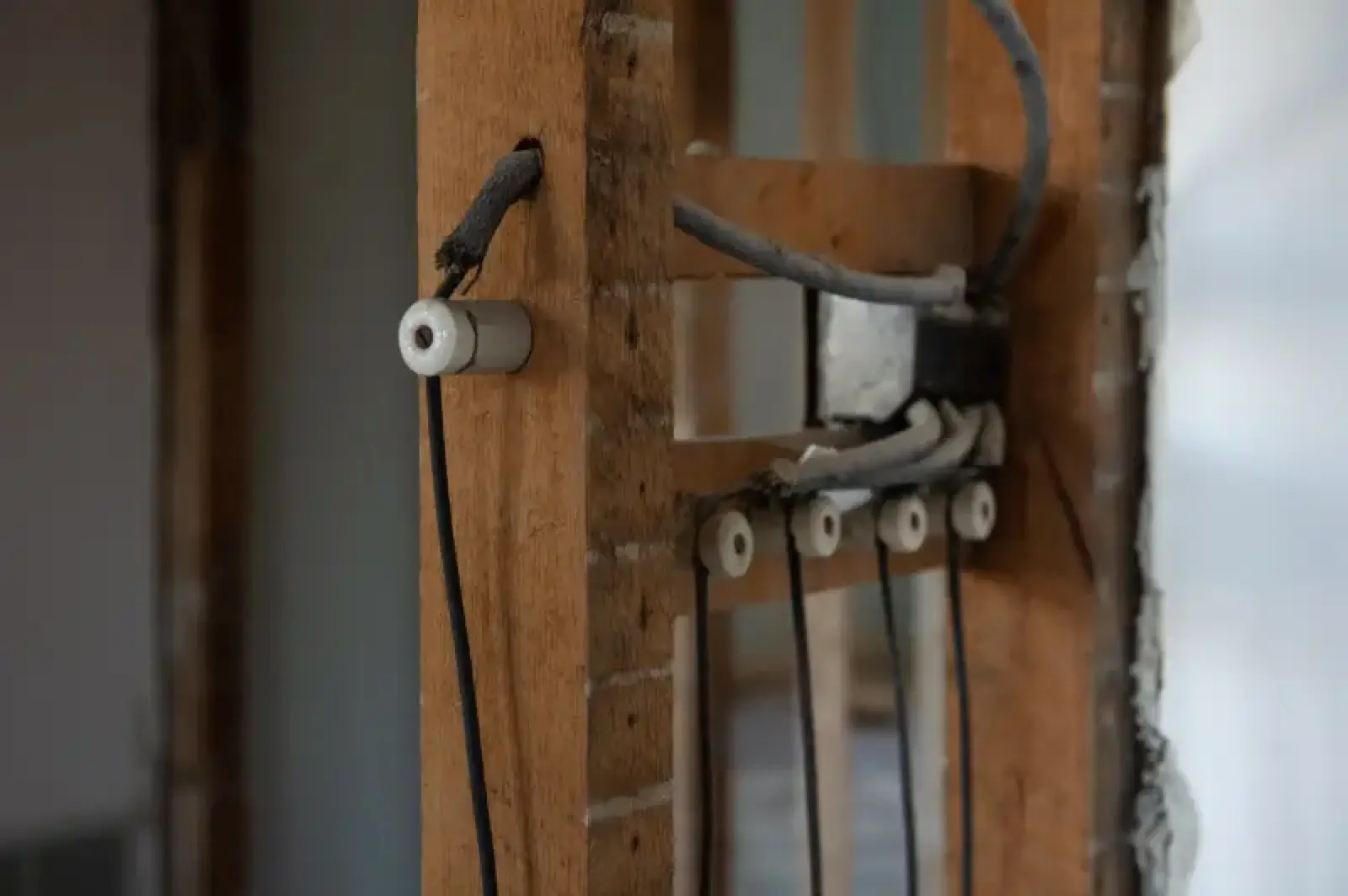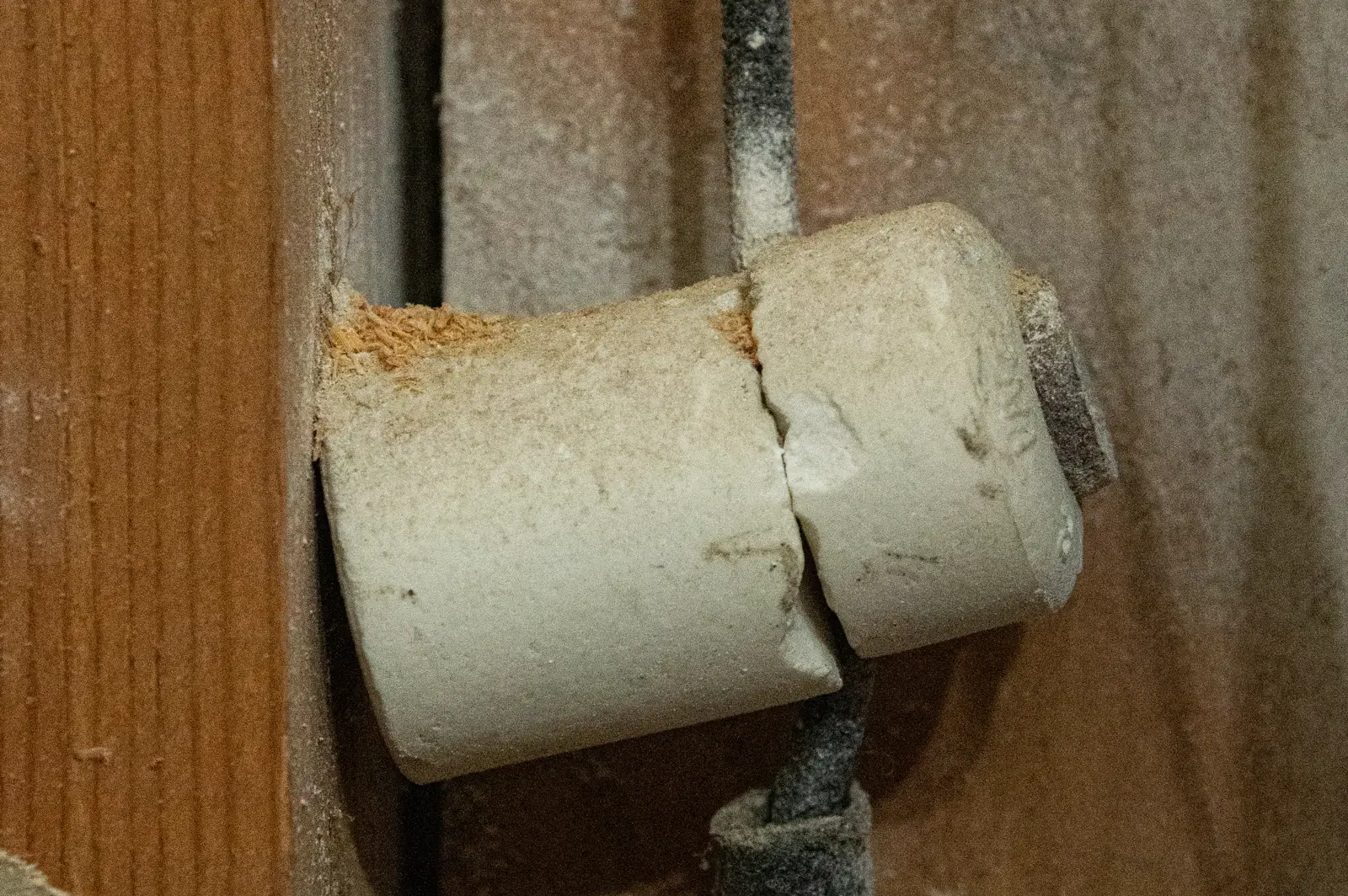
Knob and tube wiring poses significant safety risks, according to Mr. Electric.
|
Knob and tube wiring, once a standard in homes across the country from the 1880s through the 1940s, is now considered outdated and dangerous. Though many homeowners may not have encountered it, this type of wiring is still present in many older and historic homes. Unfortunately, because it is often hidden from view, the risks associated with knob and tube wiring are easily overlooked, putting homes and families in danger.
What Makes Knob and Tube Wiring Dangerous?
Several factors contribute to why knob and tube wiring is dangerous, including its age, design limitations, and common issues still found in older homes today.
Age of the Wiring
While knob and tube wiring may have functioned well in its time, it is ill-equipped for the demands of modern households. Today's homes use far more electricity than homes did in the 1940s, due to modern appliances like refrigerators, televisions, and other electronic devices. As a result, knob and tube wiring often get overloaded, creating a fire hazard.
Insulation Deterioration
Over time, the rubberized cloth used to insulate the wires can degrade, exposing wires and even corroding copper due to the breakdown of insulation additives. The wiring may also come into contact with flammable materials or conductive building elements, increasing the risk of fires or electric shocks.
Lack of a Ground Wire
One major flaw in knob and tube wiring is its lack of a ground wire. This makes it incompatible with modern three-prong appliances and devices, putting them at a higher risk of damage. More importantly, it presents a serious safety concern as it exposes homes and families to a greater risk of electric shock and fire.
Incompatibility with Moisture
Knob and tube wiring was never designed to handle exposure to moisture, which makes it especially hazardous in damp environments like kitchens, bathrooms, laundry rooms, and outdoors where today’s National Electric Code (NEC) requires GFCI outlets. These areas can increase the risk of electrical malfunctions, shocks, and fires when knob and tube wiring is present.
Tendency to Be Overlooked
The knob and tube system was designed to dissipate heat freely into the air, but home improvements—such as adding insulation—may cause the wiring to become trapped or covered. This can result in overheating and poses fire risks, as the National Electric Code (NEC) prohibits the covering of knob and tube wiring with insulation or using it in spaces where insulating materials come into contact with the wiring.
Frequent Improper Modifications
Unqualified homeowners commonly attempt to repair or alter the knob and tube wiring themselves, sometimes using masking or other tape instead of the proper electrical tape. In other cases, homeowners may install fuses with higher amperage ratings than the wiring can safely handle, overloading the circuit and dramatically increasing the risk of a fire.

Upgrading Your Knob and Tube Wiring
Understanding the dangers of knob and tube wiring and the fire risks associated with outdated electrical systems, it’s no wonder why many insurance companies refuse to cover homes with active K&T wiring.
Work with your trusted service professionals to bring your outdated electrical up to meet the current NEC code in a few steps:
- Step 1: Assessment. Your service professional will review the existing wiring and discuss your future electrical needs. If needed, a new electrical panel is installed to handle increased electrical loads.
- Step 2: Wiring Plan. A rewiring plan is created. Your service professional will be using fishing wire to minimize wall damage while ensuring all areas of your home can be updated safely.
- Step 3: Permitting. Your service professional will obtain the necessary permits from your local building authority.
- Step 4: Upgrading Electrical Systems. Following the permitted wiring plan, new circuits and outlets are added to support energy-efficient light fixtures, modern appliances, and electronic devices.
Need Help Addressing Knob and Tube Wiring Dangers? Mr. Electric Is Here
Contact your local Mr. Electric® service professional today to schedule an electrical safety inspection and ensure your wiring meets modern standards. Request an appointment or call us to discuss your options.
This article is intended for general informational purposes only and may not be applicable to every situation. You are responsible for determining the proper course of action for your home and property. Mr. Electric is not responsible for any damages that occur as a result of this blog content or your actions. For the most accurate guidance, contact your local Mr.Electric location for a comprehensive, on-site assessment.
